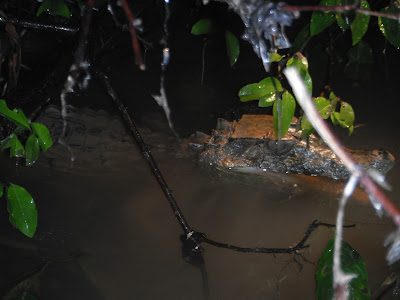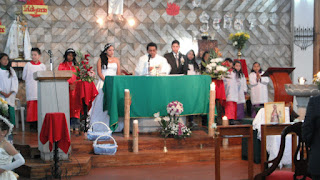Someone asked
me to write a little bit about what it has been like being a gringa in South
America, as well as to describe how my interviews went. This was my first
experience living in a country as a racial minority, and it’s been much harder
than I originally anticipated it would be. Especially being female in a
machismo society. In Peru, I found that most of the attention I received was in
the form of blatant staring or cat calls, but in Puerto López, I’ve noticed
that white girls get publically shouted out to a lot in addition to the staring
and whistles. For instance, when my friend and I would walk from our home-stays
to a café in the center of town to work on our projects, over three-quarters of
the men we passed would say hello to us in either English or Spanish and make
comments out-loud about our appearances. It’s very uncomfortable, and has
started to bother me more and more as time goes on. I wish I could blend in
with the locals, but its impossible when the entire male population of Puerto
López is pointing out that we’re different. It’s also difficult because when
someone says hi to me, I automatically feel like I should be friendly and say
hello in return to them. But apparently a positive response is like a green
light, and invites more unwanted conversation and comments.
It’s
interesting that in South America, it isn’t considered rude to comment on
people’s physical appearance or physical differences. In the states, it would
be very inconsiderate to call someone “Fatty” as a nickname if they were
overweight, but here, the nickname “Gorda” or “Fatty” is very common. The
6-year-old cousin of my host sisters has this nickname, and everyone in town
calls her by it even though she’s only slightly chubby. It’s not meant to be
rude, and on the contrary, shows affection from those who use it. When I first
arrived, my little sisters called me “Gringita”, or white girl, and the ending
“ita” is meant to show affection. So even though my new nickname points out my
physical differences, it is based on affection.
During
my interviews, I mostly talked to women. When I wandered about the different
neighborhoods trying to find people to interview, it was usually easiest to ask
the women outside washing clothes. One thing that was shocking to me during the
interviews was the education level of the townspeople. One of my demographic
questions was about their education, and I found out that 21 of the 50 people I
interviewed had only finished part or all of elementary school, no more. And
only 8 had gone onto school past high school. One older women I talked to
hadn’t gone to a single day of school.
I
noticed many differences between my city and Puerto López in terms of the role
of women and age at marriage/having children, and asked my host mom a lot of
questions about this. In Puerto López, girls start having kids as young as 13
years old, and it’s common for 16 yr olds and up to get married (not a
technical marriage, since that rarely happens here. The term ‘marriage’ more
implies that the girl begins living in her boyfriend’s house with his family).
The cousin of my host sisters is 16 and already has a one-yr-old baby. My host
parents told me that up in the mountains close to Puerto López, the kids start
getting married around 12. I was mostly surprised by how the adults considered
this behavior normal. There was no talk of it being an issue that needed to be
changed; it is simply a fact of life for them.
To
change the subject a little, I finished my final paper for my project today!
We’ll be enjoying our last few days here on the coast, and then leaving for
Quito on Friday night. On Sunday, my half of the program group is going back up
to the cloud forest for the final 4 days of the program. There, we’ll be giving
our independent study presentations and going over re-entry to the US.
This
will probably be my last blog post for this trip – I’m leaving for the states
in less than two weeks, and won’t have internet in the cloud forest. However, I
would like to thank everyone who has supported me in my travels. It's meant a lot to me hearing from you through emails and comments. I hope you
all enjoyed reading my blog these past six months!
McKenzie























































